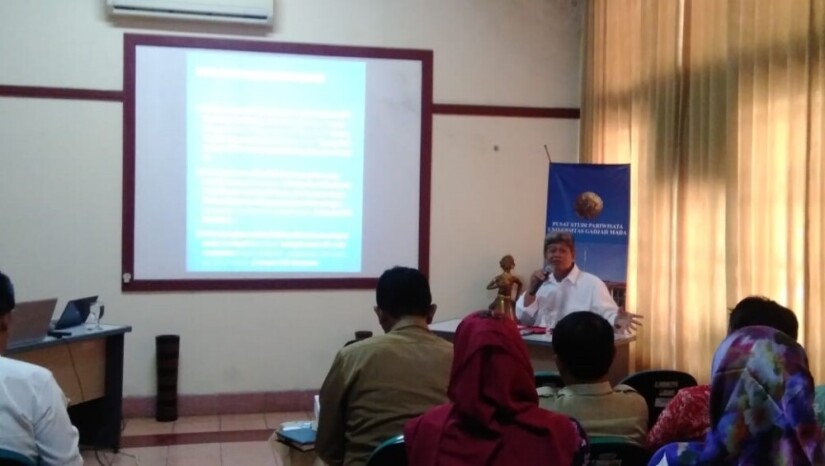
Attention needs to be given to the development of seaports in areas that have long coastal sediment transport rates. Currently, there are no sufficient data of waves available in Indonesia, especially for the long term. This will create inaccuracies in predicting the high and low tides which may lead to inaccuracy in coastal line changes or evaluation of erosion and sedimentation rates.
This emerged in the discussion conducted at the seminar room of Centre for Transportation and Logistical Studies UGM on Monday (7/10) in collaboration with Senior Experten Services (SES) from Germany. It invited transportation expert from Germany, Franz Horberg, as well as professors from UGM, Prof. Nur Yuwono, Prof. Bambang Triatmodjo, and Prof. Radianta Triatmaja, with the moderator Hengki Purwoto, M.A, researcher from the Centre.
Nur Yuwono said he had found many cases of erosion and sedimentation in a number of Indonesian seaports. For example, Baai Bengkulu island port had experienced severe sedimentation at a rate of 600,000 m3 per annum so that the port is no longer operable. The same thing happened to Tanjung Adikarto port in Kulonprogo, said Nur Yuwono, with a rate of 731,000 m3 per year from the west and 1,024,300 m3 per year from the east.
To resolve the problem relies on wave breakers but this still faces barriers due to the high costs of providing them. Prof. Radianta Triatmaja said the wave breaker design was costly, even the design would affect the capacities in service, efficiency, operational and maintenance costs. Thus, providing wave breakers ought to be considered seriously to optimise the port management costs. “To function optimally, the right design, construction, and maintenance of the wave breaker is needed,” he said.
Meanwhile, Franz Horberg described the importance of understanding the sustainability of a port for the long run by giving attention to the analysis of port demand, facility planning, investment, finance, business and strategy, optimisation, and regulations.

